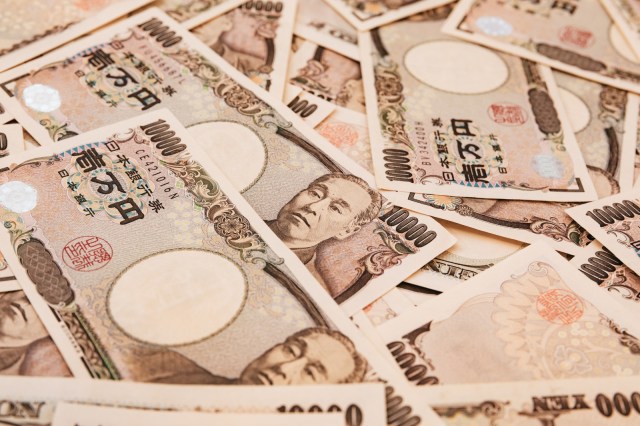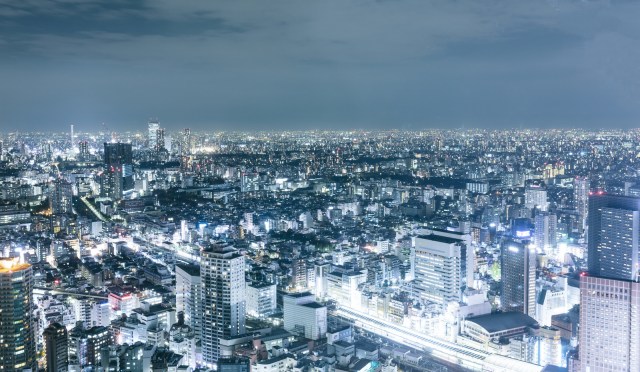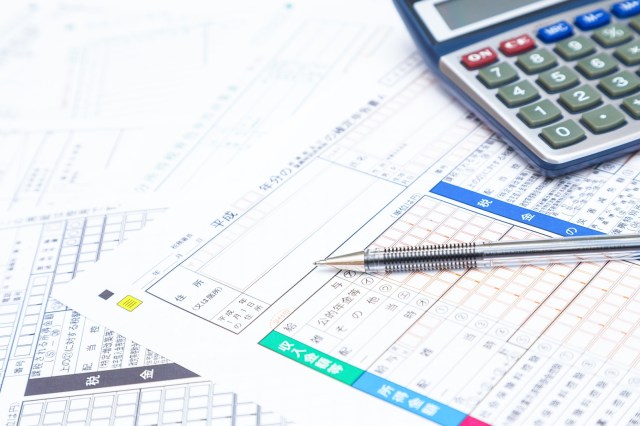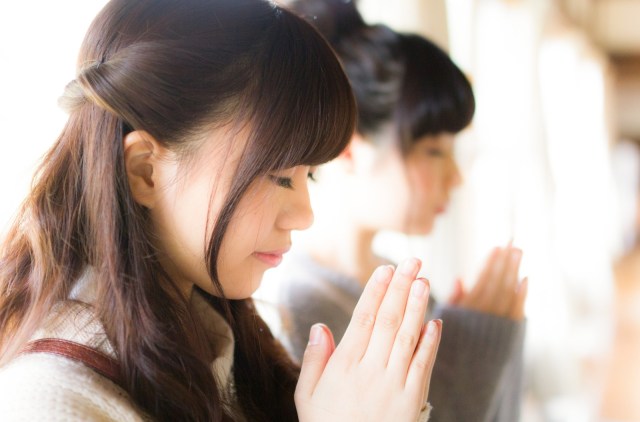
And that’s not something you can easily take a loan out for.
Raising a family is no small feat. Whether you’re a two-guardian household with one child, or a single parent household with several children, there is a variety of difficulties, both logistical and financial, that go into child-rearing and sustaining one’s livelihood.
And especially for families living in Tokyo, a recently published report has shown that the average household costs by the time parents are in their fifties is about 23.5 million yen (US$227,437).
▼ Some studies say Tokyo is the best city to live in the world,
but would that be for singles or for families?
The report was published by the Tokyo Regional Council of Trade Unions (TRCTU). This council consists of regional labor unions representing different industries of the Tokyo area, and in 2019, they conducted a survey among 3,200 individuals from a wide gamut of professional backgrounds. Among these 3,200 individuals, 739 had children in their households, and the TRCTU closely examined the financial situation of these 739 households.
Despite these households having at least one member working as a full-time, permanent employee, the TRCTU found that household costs were greatly increasing over the years. In the report, the council used the following family’s monthly budget as a model for their calculations. As reference, the family consists of two parents and two children who live in uptown Tokyo, specifically Nerima Ward, and their monthly budget was broken down into the following:
- Rent for an apartment: 95,000 yen (43 square meters or 463 square feet)
- Food expenses: 110,000 yen (300 yen per every meal per person with 3,500 yen set aside for the obligatory work party)
- One monthly family outing: 8,000 yen
- School tuition fees and other related costs: about 28,000 yen
▼ Whenever my mother asks me where her grandchildren are,
my only answer is: “In this economy???”
Adding up those numbers and including taxes as well as insurance, the model family’s monthly cost comes out to around 540,000 yen (US$5,226), which is about 60,000 yen more than the average monthly cost for a family living in Kyoto. While the family’s monthly and yearly income wasn’t stated in the report, TRTCU did more number crunching and the results weren’t pretty.
For the parents of the model household, their yearly expenses would be 6.5 million yen in their thirties, 7.4 million in their forties, and then a whooping 9.6 million yen in their golden fifties. Within the span of two decades, the annual household cost would grow by 3.1 million yen and many netizens had one question in mind: why is there such a sharp bump in costs?
▼ Sweet, sweet pension, may I live long enough to collect you someday… because I’ll need the money for my kids.
TRCTU notes that the bump in costs for those in their fifties is due to the price of sending their children to university. Compared to other countries where higher education is free due to taxes, or where student loans are prevalent in the case of the USA, the average cost of attending a four-year university in Japan can range anywhere between 2.4 million yen to 5.4 million yen.
Besides whether or not the university is a public or private one, other factors that go into university expenses include yearly tuition, living costs, university exam fees, and cram school fees for passing university entrance exams.
▼ Praying I pass these exams, not to only get into a good university or a decent paying job, but so my parents don’t have to pay for those application fees again.
Frankly, every household also has their own unique circumstances that change its budgeting and spending needs. The model presented by the TRCTU is not reflective of every household in Tokyo, but the potential annual costs calculated show how financially beleaguered Tokyo families may become in the next several decades. It should also be noted that this recent report don’t necessarily reflect how the COVID-19 pandemic has affected living costs, but there’s no doubt that the financial situations of many families have only been exacerbated since April 2020.
For the time being, the TRCTU is using their report as a leverage to argue for wage increases, though systemwide reform will probably have to take place for any substantial change to occur, especially when there are companies who still issue hellish paychecks like this one here.
Source: Huffington Post Japan via Hachima Kiko
Top image: Pakutaso
Insert images: Pakutaso (1, 2, 3, 4)
● Want to hear about SoraNews24’s latest articles as soon as they’re published? Follow us on Facebook and Twitter!




 Tokyo makes high school free for all families, even the rich ones
Tokyo makes high school free for all families, even the rich ones The Bat Cave apartment: a unique place to stay in Shibuya, Tokyo
The Bat Cave apartment: a unique place to stay in Shibuya, Tokyo Kyoto families angered by new policy forcing high school students to buy tablets at own expense
Kyoto families angered by new policy forcing high school students to buy tablets at own expense Author breaks down economics of anime, tells us exactly what Sailor Moon’s house is worth
Author breaks down economics of anime, tells us exactly what Sailor Moon’s house is worth City of Sapporo to subsidize the price of city water to help offset rising consumer costs
City of Sapporo to subsidize the price of city water to help offset rising consumer costs McDonald’s new Happy Meals offer up cute and practical Sanrio lifestyle goods
McDonald’s new Happy Meals offer up cute and practical Sanrio lifestyle goods All-you-can-drink Starbucks and amazing views part of Tokyo’s new 170 meter-high sky lounge
All-you-can-drink Starbucks and amazing views part of Tokyo’s new 170 meter-high sky lounge Studio Ghibli glasses cases let anime characters keep an eye on your spectacles
Studio Ghibli glasses cases let anime characters keep an eye on your spectacles Kyoto’s 100 Demons yokai monster parade returns!
Kyoto’s 100 Demons yokai monster parade returns! Beautiful Sailor Moon manhole cover coasters being given out for free by Tokyo tourist center
Beautiful Sailor Moon manhole cover coasters being given out for free by Tokyo tourist center Man in Japan orders female store clerk to prostrate herself over misunderstanding with his change
Man in Japan orders female store clerk to prostrate herself over misunderstanding with his change The oldest tunnel in Japan is believed to be haunted, and strange things happen when we go there
The oldest tunnel in Japan is believed to be haunted, and strange things happen when we go there Hey, Japanese taxi driver! Take us to your favorite restaurant in Tsuruga City!
Hey, Japanese taxi driver! Take us to your favorite restaurant in Tsuruga City! Studio Ghibli releases new free-to-use anime images to “use within the bounds of common sense”
Studio Ghibli releases new free-to-use anime images to “use within the bounds of common sense” Beautiful, intricate drawings of snowflakes from Edo-era Japan
Beautiful, intricate drawings of snowflakes from Edo-era Japan Disney princesses get official manga makeovers for Manga Princess Cafe opening in Tokyo
Disney princesses get official manga makeovers for Manga Princess Cafe opening in Tokyo More foreign tourists than ever before in history visited Japan last month
More foreign tourists than ever before in history visited Japan last month Starbucks reopens at Shibuya Scramble Crossing with new look and design concept
Starbucks reopens at Shibuya Scramble Crossing with new look and design concept Beautiful new Final Fantasy T-shirt collection on the way from Uniqlo【Photos】
Beautiful new Final Fantasy T-shirt collection on the way from Uniqlo【Photos】 Is the new Shinkansen Train Desk ticket worth it?
Is the new Shinkansen Train Desk ticket worth it? Foreign English teachers in Japan pick their favorite Japanese-language phrases【Survey】
Foreign English teachers in Japan pick their favorite Japanese-language phrases【Survey】 Japanese convenience store packs a whole bento into an onigiri rice ball
Japanese convenience store packs a whole bento into an onigiri rice ball We try out “Chan Ramen”, an underground type of ramen popular in the ramen community
We try out “Chan Ramen”, an underground type of ramen popular in the ramen community Studio Ghibli releases Kiki’s Delivery Service chocolate cake pouches in Japan
Studio Ghibli releases Kiki’s Delivery Service chocolate cake pouches in Japan Japan’s bone-breaking and record-breaking roller coaster is permanently shutting down
Japan’s bone-breaking and record-breaking roller coaster is permanently shutting down New definition of “Japanese whiskey” goes into effect to prevent fakes from fooling overseas buyers
New definition of “Japanese whiskey” goes into effect to prevent fakes from fooling overseas buyers Our Japanese reporter visits Costco in the U.S., finds super American and very Japanese things
Our Japanese reporter visits Costco in the U.S., finds super American and very Japanese things Studio Ghibli unveils Mother’s Day gift set that captures the love in My Neighbour Totoro
Studio Ghibli unveils Mother’s Day gift set that captures the love in My Neighbour Totoro Foreign passenger shoves conductor on one of the last full runs for Japan’s Thunderbird train
Foreign passenger shoves conductor on one of the last full runs for Japan’s Thunderbird train Domino’s Japan now sells…pizza ears?
Domino’s Japan now sells…pizza ears? New Japanese KitKat flavour stars Sanrio characters, including Hello Kitty
New Japanese KitKat flavour stars Sanrio characters, including Hello Kitty Kyoto creates new for-tourist buses to address overtourism with higher prices, faster rides
Kyoto creates new for-tourist buses to address overtourism with higher prices, faster rides Sales of Japan’s most convenient train ticket/shopping payment cards suspended indefinitely
Sales of Japan’s most convenient train ticket/shopping payment cards suspended indefinitely Sold-out Studio Ghibli desktop humidifiers are back so Totoro can help you through the dry season
Sold-out Studio Ghibli desktop humidifiers are back so Totoro can help you through the dry season Japanese government to make first change to romanization spelling rules since the 1950s
Japanese government to make first change to romanization spelling rules since the 1950s Ghibli founders Toshio Suzuki and Hayao Miyazaki contribute to Japanese whisky Totoro label design
Ghibli founders Toshio Suzuki and Hayao Miyazaki contribute to Japanese whisky Totoro label design Doraemon found buried at sea as scene from 1993 anime becomes real life【Photos】
Doraemon found buried at sea as scene from 1993 anime becomes real life【Photos】 Tokyo’s most famous Starbucks is closed
Tokyo’s most famous Starbucks is closed One Piece characters’ nationalities revealed, but fans have mixed opinions
One Piece characters’ nationalities revealed, but fans have mixed opinions We asked a Uniqlo employee what four things we should buy and their suggestions didn’t disappoint
We asked a Uniqlo employee what four things we should buy and their suggestions didn’t disappoint Princesses, fruits, and blacksmiths: Study reveals the 30 most unusual family names in Japan
Princesses, fruits, and blacksmiths: Study reveals the 30 most unusual family names in Japan Japanese ministry finds correlation between level of income and diet, number of teeth
Japanese ministry finds correlation between level of income and diet, number of teeth Top five Japanese prefectures for childhood education expenditure would make any wallet shudder
Top five Japanese prefectures for childhood education expenditure would make any wallet shudder Town in Yamaguchi accidentally sends everyone’s COVID-19 relief money to one person
Town in Yamaguchi accidentally sends everyone’s COVID-19 relief money to one person Tokyo’s latest plan to boost birth rate: Pay people 100,000 yen per baby they give birth to
Tokyo’s latest plan to boost birth rate: Pay people 100,000 yen per baby they give birth to Japan’s Princess Aiko won’t have tiara made for her, in consideration of hard economic times
Japan’s Princess Aiko won’t have tiara made for her, in consideration of hard economic times Snappy as they look, Japanese school uniforms can be an extremely expensive hassle for parents
Snappy as they look, Japanese school uniforms can be an extremely expensive hassle for parents More Japanese workers are ditching crisp business suits for casual and comfortable wear
More Japanese workers are ditching crisp business suits for casual and comfortable wear What’s the minimum amount of money Japanese women want their husbands to earn? Survey investigates
What’s the minimum amount of money Japanese women want their husbands to earn? Survey investigates How much money do you need to live in your own apartment in Japan?【Survey】
How much money do you need to live in your own apartment in Japan?【Survey】 “HOW much?!” Professor estimates appropriate salary for housewives, housewife actresses gasp
“HOW much?!” Professor estimates appropriate salary for housewives, housewife actresses gasp Japanese government to start giving newlywed couples a wedding gift of 600,000 yen
Japanese government to start giving newlywed couples a wedding gift of 600,000 yen Japan’s randoseru school backpacks keep getting more expensive, so now parents can rent them
Japan’s randoseru school backpacks keep getting more expensive, so now parents can rent them How much money do you need for a studio apartment in downtown Tokyo?
How much money do you need for a studio apartment in downtown Tokyo? Survey shows how Japanese couples feel about spending so much time together sheltering in place
Survey shows how Japanese couples feel about spending so much time together sheltering in place This couple is waaaaayyyy too happy about their mediocre lot in life
This couple is waaaaayyyy too happy about their mediocre lot in life Three main reasons why fewer and fewer Japanese people are having funerals
Three main reasons why fewer and fewer Japanese people are having funerals
Leave a Reply